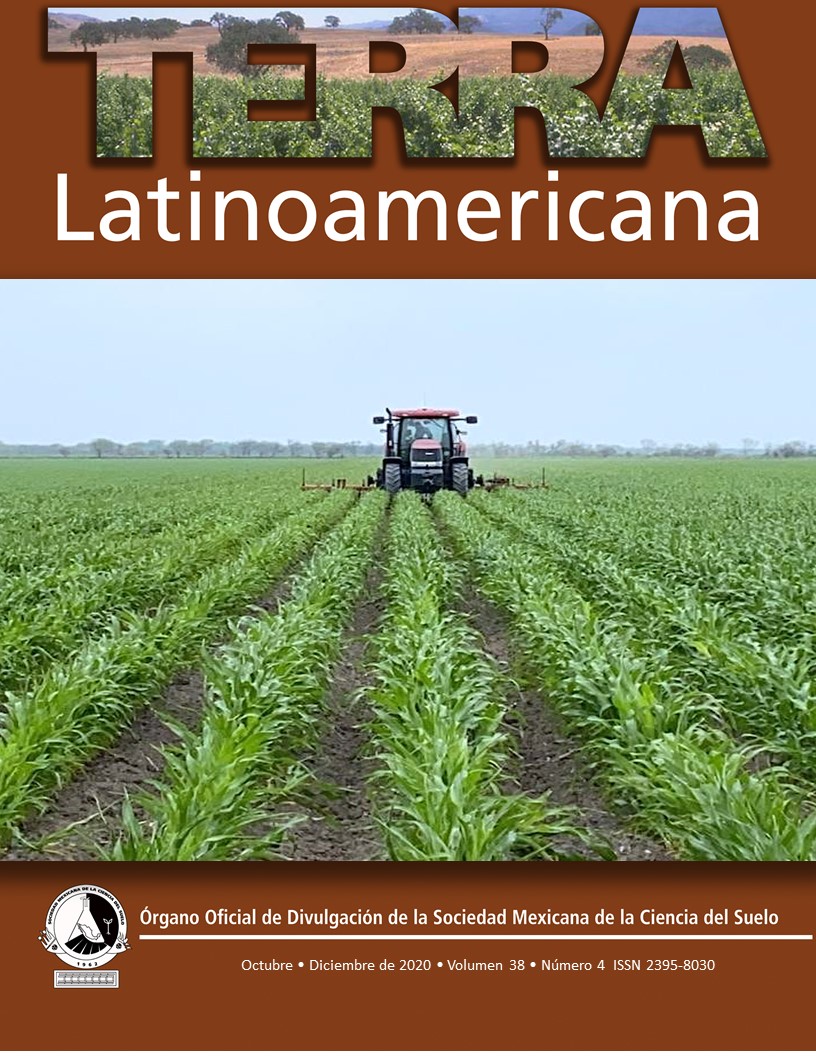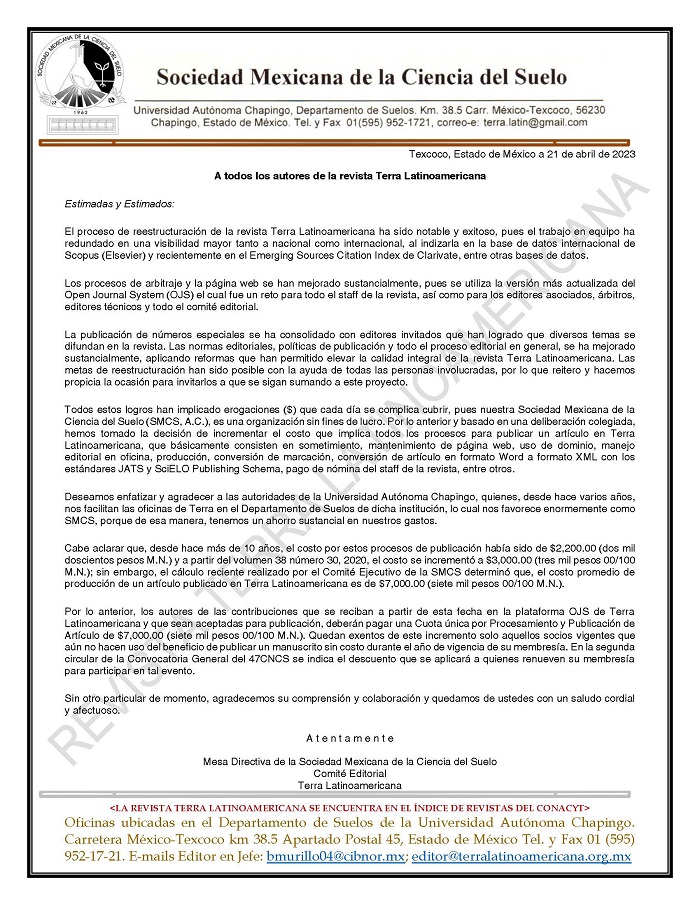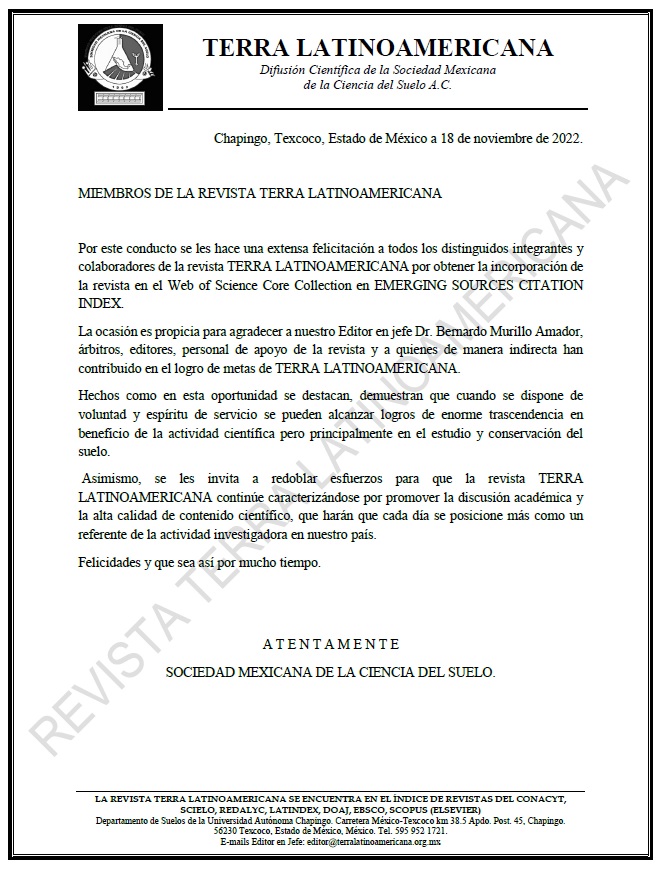Correction of “mouse ear” symptoms in pecan with foliar applications of nickel
DOI:
https://doi.org/10.28940/terra.v38i4.791Keywords:
leaf area, foliar fertilization, yieldAbstract
Nickel (Ni) deficiency in pecan trees (Carya illinoinensis (Wangenh.) K. Koch) negatively affects leaf growth, nitrogen and carbon metabolism during foliage expansion, and consequently yield. Fertilization to the soil with micronutrients is ineffective in soils with high carbonate content and high pH. To evaluate the effect of foliar application of nickel on yield, nutritional content, and leaf area of pecan leaves, in a randomized block design four increasing doses were sprayed on foliage: 100, 150, 200 mg L-1 and one control with no application. The results indicate that Ni foliar spraying corrects the abnormality known as mouse ear (increase in leaf area) and increases absorption of this element by inhibiting the absorption of Cu and Mn. Spraying 100 mg L-1 increased leaf area and pecan yield per tree.
Downloads
Publication Facts
Reviewer profiles N/A
Author statements
- Academic society
- Terra Latinoamericana
- Publisher
- Mexican Society of Soil Science, C.A.

















